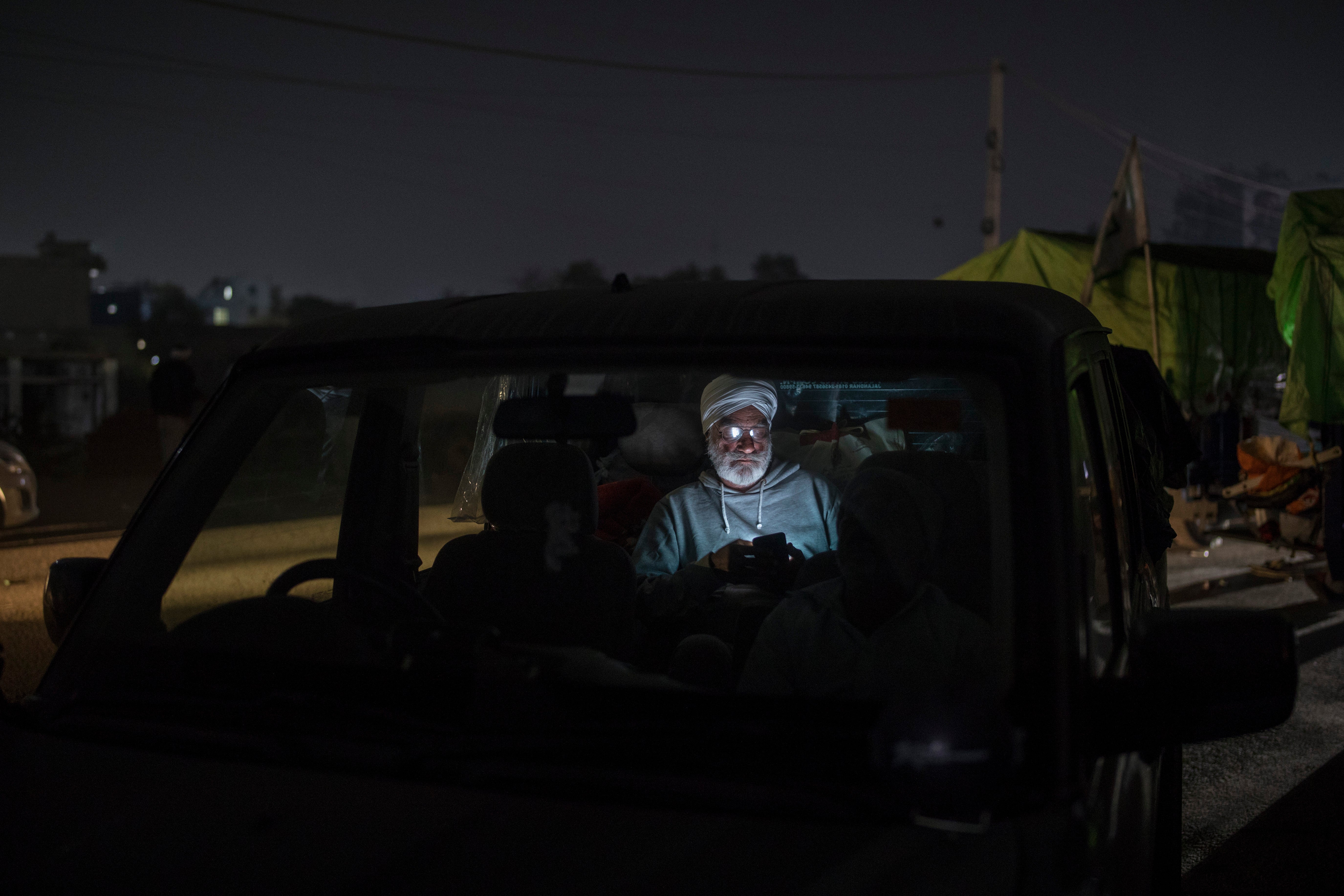AP PHOTOS: Angry Indian farmers besiege capital in trucks

Your support helps us to tell the story
From reproductive rights to climate change to Big Tech, The Independent is on the ground when the story is developing. Whether it's investigating the financials of Elon Musk's pro-Trump PAC or producing our latest documentary, 'The A Word', which shines a light on the American women fighting for reproductive rights, we know how important it is to parse out the facts from the messaging.
At such a critical moment in US history, we need reporters on the ground. Your donation allows us to keep sending journalists to speak to both sides of the story.
The Independent is trusted by Americans across the entire political spectrum. And unlike many other quality news outlets, we choose not to lock Americans out of our reporting and analysis with paywalls. We believe quality journalism should be available to everyone, paid for by those who can afford it.
Your support makes all the difference.Instead of cars, the normally busy highway on the outskirts of New Delhi that connects most northern Indian towns to the capital is filled with tens of thousands of protesting farmers many wearing colorful turbans.
Their convoy of trucks, trailers and tractors stretches for at least three kilometers (1.8 miles). Inside, they have hunkered down, supplied with enough food and fuel to last weeks.
It’s a siege of sorts and the mood among the protesting farmers is boisterous. Their rallying call is “Inquilab Zindabad” (“Long live the revolution”).
The farmers are protesting new laws they say will result in their exploitation by corporations, eventually rendering them landless.
Prime Minister Narendra Modi's government, rattled by the growing rebellion, insists the reforms will benefit them.
But the farmers aren’t yielding.
At night, they sleep inside the trailers or under the trucks. During the day, they sit huddled in groups at the backs of the vehicles, surrounded by mounds of rice, lentils and vegetables.
They take early morning cold showers in the open and spend lazy afternoons reading newspapers on neatly spread foam mattresses. Sitting cross-legged on a piece of cloth under their trucks, they play cards to fill the time.
Meals are prepared in enormous pots stirred with wooden spoons the size of canoe paddles. Food is served in hundreds of makeshift roadside soup kitchens. Washed clothes are hung neatly to dry on ropes stretched between tractors.
“We aren't going to leave this place,” said Gurpreet Singh, 26, a biotechnology student from a farming family. “It's a fight for our survival.”
Every day, thousands more join the protesters.
The protests started in September but drew nationwide attention last week when the farmers marched from northern Punjab and Haryana, two of India's largest agricultural states. On their way to the capital, they pushed aside concrete barricades set up by police and braved tear gas, batons and water cannons.
Now, on the outskirts of New Delhi, they are blocking highways, unwilling to withdraw and threatening to besiege the capital if their demands aren’t met.
“It will be a long battle,” said farmer Darshan Singh Khatauli, 65. “It is up to the government when they want to end this.”